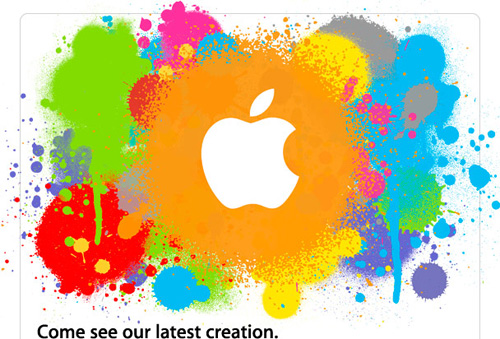Apple recently hosted their yearly “music event”. As expected, they introduced new iPods. However, this particular event had a lot of little nuggets of tantalizing information. Now that I’ve had some time to digest it all, I’ll be writing a series of articles on these nuggets. However, I thought I’d quickly touch on a few topics.
Steve Wozniak was in attendance. Steve Jobs seemed genuinely surprised and delighted. Does this have any significance? When was the last time Woz attended any official Apple events?
It’s interesting that Apple introduced printing into the upcoming iOS 4.2 update for November. My guess is they got enough complaints about the iPad not being able to print, especially from business users, that they added it into this update. I felt that by not including printing originally, Apple was trying to make a point that the iPad was in many ways a replacement for paper. Perhaps the world just isn’t quite ready for that yet.
Steve Jobs made it a point to emphasize that an iPod Touch is an iPhone without a contract. Why would he do this? If he was simply trying to make clear that the iPod Touch is an iPhone without the phone, it seemed like overkill. It also seemed like he slowed down and wanted to really drive this point home. Was Steve taking a jab at AT&T? Or was he swinging at the entire wireless industry? Or perhaps he was foreshadowing something else altogether.
Apple finally revived the Apple TV at this event. Which is somewhat interesting because Apple calls this their yearly music event. Everything else discussed at this event was music related, yet the Apple TV is obviously geared towards movies and TV shows. It simply could be the fact that this was good timing for Apple to release an updated Apple TV prior to the holiday shopping season. But it could also be a sign that Apple has finally figured out how they want to position the Apple TV. And maybe they feel the mainstream market is now ready to receive the Apple TV in earnest. The next few weeks and months should tell if Apple is really ready to take the Apple TV out of “hobby” status.
Steve Jobs also took a subtle swipe at competing devices. While discussing what consumers have taught them about the Apple TV thus far, he said, “They don’t want a computer on their TV. They have computers. They go to their widescreen TVs for entertainment, not to have another computer. This is a hard one for people in the computer industry to understand. But it’s really easy for consumers to understand. They get it.” This is a good point that I believe has relevance beyond the home media market.
When Netflix announced their app for the iPhone a few months back, I was a little surprised that Apple allowed it, since it seemed to compete with their iTunes movie service. So you can imagine my surprise when Apple themselves announced Netflix support in the Apple TV. Suddenly it seems Apple is very cozy with Netflix. What could this mean?
Finally, there seems to be some tension between Apple and Facebook over Apple’s new Ping social network. I noticed during Steve Job’s speech that Ping showed that you could log in with your Facebook ID. I even mentioned to my wife that this was a great move on Apple’s part. Yet the next day I read reports that this feature was not available. Sure enough, this feature was not available, even though it still mentioned FaceBook on Apple’s web site. Something interesting is going on behind the scenes and I can’t wait to find out what that is.
So stay tuned as I tackle some of these topics in more depth very soon.
